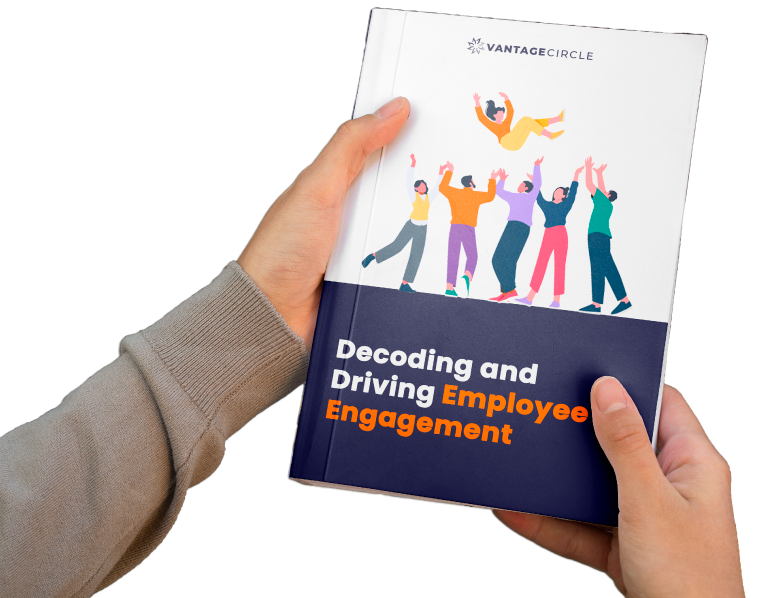17 Drivers Of Employee Engagement You Need To Know in 2024
Rev up your team's engagement by exploring the dynamic drivers of employee engagement. From impactful leadership to a culture of recognition, these key elements power the passion and commitment within your workforce.
Join us on this journey to unlock the secrets of a highly engaged and empowered team!
Key Insights
- What is employee engagement?
- Why are drivers of employee engagement important?
- List of top drivers of employee engagement
- Strategies to leverage the drivers of employee engagement
What is Employee Engagement?

Before understanding the drivers, it is pertinent to understand the concept of employee engagement. Employee engagement refers to the emotional commitment an employee has to their organization and its goals. An engaged employee not only finds meaning and purpose in their work but goes the extra mile to help their company succeed.
Engaged employees exhibit three key behaviors:
- Say - Employees speak positively about the organization to coworkers, potential employees, and customers.
- Stay - Employees have an intense desire to be a member of the organization despite opportunities to work elsewhere.
- Strive - Employees put in extra time, brainpower, and energy to help the organization grow and thrive.
Gallup research shows that engaged employees have higher productivity, profitability, safety records, and customer ratings than companies with low engagement. They are also more likely to withstand temptations to leave the organization.
To cultivate engagement, companies must emphasize employee engagement's key drivers. These drivers encapsulate the extent to which employees believe their work contributes positively to the organization.
Why are Drivers of Employee Engagement Important?

The drivers have a direct link to discretionary effort and commitment from your employees. Organizations that actively focus on optimizing engagement drivers reap the rewards. They get passionate and driven employees who feel energized and excited about their work.
Essentially, these drivers light a fire under your people, transforming ordinary workers into enthused brand ambassadors!
On the flip side, When you don't prioritize these critical elements, they tend to end up with disengaged teams. Disengaged employees are indifferent, unmotivated, and stagnant. And no one wants that!
"But do these drivers really impact the business?" you might be wondering.
The answer is a resounding yes!
A Gallup research shows that companies scoring higher on validated employee engagement assessments achieve better outcomes like -
- Improved productivity,
- Sales,
- Safety records and
- Profitability.
Frameworks that analyze important drivers end up with more dedicated and higher-performing teams.
In short, optimizing drivers sparks and sustains employee engagement over time. Engaged teams then drive better collective results.
Therefore, business leaders must keep a pulse on drivers. Regular surveys, analytics and responsive action planning are key. These efforts connect workplace elements to motivated people and organizational achievement.
17 Drivers of Employee Engagement
Creating a genuinely engaging workplace that inspires discretionary effort requires focusing on several critical areas. These critical areas motivate employee commitment, passion, and performance.
After extensively analyzing leading research and benchmarks on workplace engagement, the following 17 drivers have proven to be vital for organizations seeking to inspire their people:
1. Meaningful Work

There's nothing quite like the fulfillment that comes from doing work that matters. Employees wish to know their work makes a real impact, not just move metrics.
Connecting individual roles to the company's vision gives a deeper purpose to each person’s efforts.
For example, a customer service rep may better engage with their training, knowing it creates excellent client experiences that the company’s mission aims to provide.
Leaders should cultivate a company culture where every task is tied back to a grander vision, ensuring employees feel valued and purposeful.
Example: MSK is the world's oldest and largest private institution devoted to the prevention, treatment, and cure of cancer.
Employees at MSK take pride in the meaningful work they are doing for the betterment of society. Their employees say -
“The close collaboration between our scientists and physicians is one of our unique strengths, enabling us to provide patients with the best care available as we work to discover more effective strategies to prevent, control, and ultimately cure cancer in the future.”
2. Career Growth

Ambition fuels progress.
Employees expect visible paths to develop skills and transition into new roles over time. Managers should have frequent informal career conversations to understand individual growth goals and connect aspirations to company needs.
For example, an employee hoping to lead team members one day could be mentored by current managers, gain exposure to leadership projects, and take courses improving soft skills.
Leaders must facilitate an environment brimming with opportunities for professional development. Show your team that their growth is a priority, and watch as they reach new heights of achievement.
Example: Warner Bros. Discovery offers development programs at all levels of the organization.
Every year, thousands of employees participate in their management development program. They also offer extensive coaching program in partnership with BetterUp. Additionally, they provide early career leadership or professional development programs.
3. Leadership Integrity

Do executives walk the talk, delivering on stated priorities with transparency?
While employees may not interface regularly with the C-Suite, they observe decisions made at the top. When leaders demonstrate unwavering commitment to the company's values and ethical practices, they set a gold standard for the entire workforce.
For example, leaders preaching work-life balance should avoid sending weekend emails themselves. And companies claiming integrity shouldn’t have ethical lapses. Alignment between messaging and behavior inspires engagement at all levels.
This transparency and integrity are the cornerstones of trust and inspiration.
Example: Employees at Apple praise the integrity of the leaders in the company. Here is a quote from their employees that demonstrates the point -
"They are always looking for feedback on how to improve and often institute changes based upon feedback. No other company that I have ever worked for has done this same thing with such success."
4. Empowerment
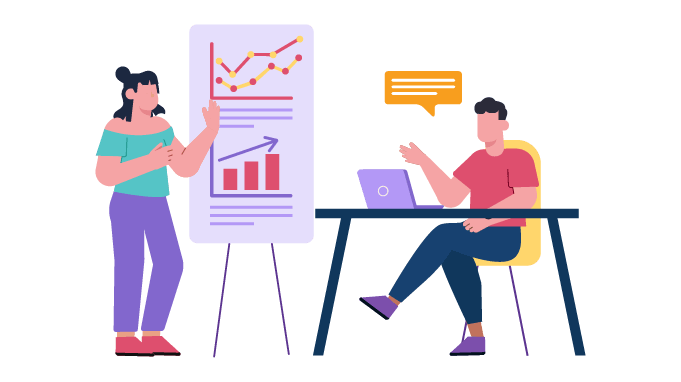
Employee empowerment is not just about assigning responsibilities. It's about fostering an environment where employees feel genuinely confident to take initiative and drive their ideas forward.
Empowerment gives employees autonomy and ownership over workstreams within broader goals set by managers.
So, what can leaders do to empower their employees?
They should start by defining target outcomes. Then, employees should be supported by providing tools and trust instead of rigid instructions. This allows employees to determine how to reach the set targets creatively.
Empowered people become invested in work outcomes and engage proactively to ensure success rather than simply going through the motions.
Example: In a survey, 86% of Heineken's senior leaders expressed a desire to learn new skills and gain fresh experiences by connecting with younger employees. As a response, Heineken initiated a reverse mentoring program where junior employees guide and mentor senior leaders and executives. This program aims to offer leaders fresh insights into the evolving landscape of work and potential areas for development.
Furthermore, Heineken has implemented a global diversity and inclusion initiative, encouraging its workforce to practice inclusivity actively and appreciate the diverse cultures of the countries where the company has a presence.
5. Autonomy

Employee autonomy sparks creativity. It provides employees control over job execution details that suit personal work styles.
For example, creative types may be given flexibility around when and where they work if that boosts innovation.
Blanket policies mandating set hours and central locations limit autonomy.
Leaders must offer employees the latitude to approach tasks in ways that best suit their skills and work style. This not only boosts their efficiency but also their job satisfaction as they craft their unique blueprint for success.
Example: Since 2004, Google has leveraged the power of autonomy through its "20% time" policy. This unique approach allows Google engineers to dedicate 20% of their work time to their own projects, aligning with their personal passions and interests.
The impact of this initiative has been remarkable. Over half of Google's most profitable products originated from these personal projects. Notable innovations like AdSense, Gmail, Google Maps, Google News, Google Earth, and Gmail Labs are all products of this creative and autonomous environment.
6. Work-Life Balance
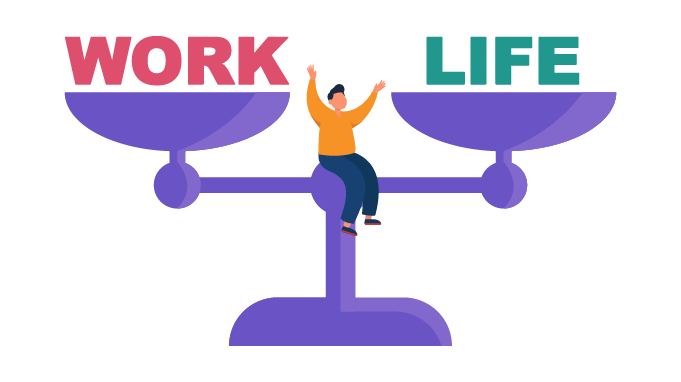
Balance isn't just a buzzword; it's a crucial aspect of employee contentment.
Work-life balance ensures employees can healthily sustain pact and pressure without jeopardizing their personal lives and responsibilities.
Managers play a key role in -
- Monitoring workloads,
- Modeling reasonable hours themselves,
- Encouraging people to take time off, and
- Promoting well-being practices.
You must ensure that long nights and weekend work are occasional necessities rather than the norm.
Respect and support your employees' lives outside work by offering flexible schedules or remote working options. You can also encourage them to take regular breaks and vacations. This understanding and flexibility lead to happier, more productive teams.
Example: Dolby, the company that produces cutting-edge audio and visual technologies, is focused on providing a balance between the work and personal lives of its employees.
Their U.S. employees are offered an off day on every alternate Friday, which adds to 26 extra days off per year. That three-day weekend every other week is a chance to re-focus, re-energize, and most importantly, take care of their employees' well-being. They also offer a whole program focusing on four key elements—physical, emotional, financial, and community.
7. Manager Relationships

The rapport between employees and their managers can make or break engagement.
So, what can the organization do to improve employee-manager relationships?
Well, the senior leadership can start by finding the answers to the questions below to improve on these aspects.
- Do employees trust their manager has their best interests and growth in mind?
- Can they openly discuss concerns before they boil over?
- Does the manager regularly provide developmental feedback?
Managers can improve employee engagement through the support, guidance, and communication they provide.
Additionally, managers should take the lead in cultivating leaders who are not only skilled in their fields but are also adept at communication, recognition, and support. Managers should act as mentors, guiding their teams with empathy and encouragement.
Example: Virgin, renowned globally and operating across various industries, has built an impressive reputation for its exceptional approach to employee relations. The company stands out for actively listening to its employees, valuing their opinions, and respecting their ideas. This open culture of communication, where employees feel free to share their thoughts with managers, has been a key driver of Virgin's continuous stream of innovative ideas.
This emphasis on listening is a fundamental aspect of employer-employee relations, yet it is often undervalued, especially in large corporate settings. Virgin's success showcases that regardless of the size of the company, paying attention to and valuing team input is not just beneficial but essential for innovation and growth.
8. Inclusivity

Inclusion gives all employees an equal voice regardless of gender, ethnicity, age, or other attributes. When people feel psychologically safe to express their authentic selves and perspectives at work, engagement thrives.
Exclusion suppresses engagement as people may mask viewpoints feared as unwelcome.
An organization can create engaging cultures through -
- Training,
- Diverse hiring,
- Employee Resource Groups (ERG),
- Recognition across identities and
- Inclusive leadership
Additionally, companies must focus on creating an environment where diversity is celebrated and every voice is heard and valued.
Inclusivity isn't just about fairness; it's about enriching your organization with a wide array of thoughts and experiences.
Example: Johnson & Johnson, a global healthcare leader, has established 12 Employee Resource Groups (ERGs) that are vital in fostering a connected, inclusive work environment. These ERGs are instrumental in nurturing employee potential, enhancing relationship building, and promoting a culture of inclusivity across the organization. By 2025, the company aims to achieve 50% female representation in management roles worldwide. Additionally, in the United States, Johnson & Johnson is working towards having 35% racial diversity within its management team.
A key aspect of Johnson & Johnson's commitment to diversity and inclusion is the direct involvement of top leadership. The company's Chief Diversity Officer reports directly to the CEO and Chairman, ensuring diversity initiatives are a top priority and overseen at the highest level. This commitment has not gone unnoticed; the company has been lauded with several accolades. It has been recognized by U.S. Veterans Magazine as the “Best of the Best” for its advancements in diversity efforts.
Moreover, Johnson & Johnson is one of only two companies to have consistently appeared on the Working Mother 100 Best list for 28 consecutive years, highlighting its longstanding commitment to diversity and inclusion in the workplace.
9. Collaboration
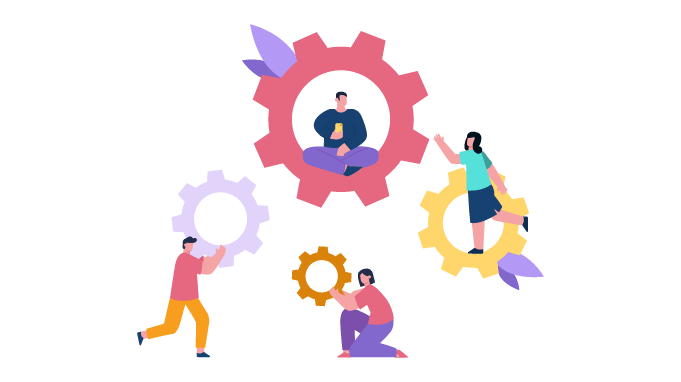
The synergy of a team working in unison is unparalleled. People wish to contribute meaningfully to group efforts rather than work isolated in silos.
Bonding within and across teams builds engagement as people interact with colleagues, share ideas, and help one another. There are multiple ways that can be useful in breaking down barriers between employees and departments. Such as -
- Organization events,
- Cross-functional projects,
- Peer recognition programs, and
- Collaborative digital tools
Encourage collaboration through team projects, shared goals, and open communication channels. When employees work together, they can bounce ideas off each other, leading to better solutions and a more cohesive work culture.
Example: Figma needed to keep track of collaboration between cross-functional teams. Its employees needed to work in tandem with other departments—while each of them had different internal workflows. They also needed to collaborate without spending too much time on daily stand-up meetings.
They solved this problem by using collaboration tools like Asana. It allowed everyone to have a clear visibility of projects’ status, allowing employees to work more efficiently together, no matter which team they’re on.
10. Workplace Relationships

Fostering friendly and professional workplace relationships among colleagues creates a supportive and enjoyable work environment.
Healthy interpersonal relationships characterize engaging workplaces where -
- Colleagues communicate openly,
- Support each other’s efforts and
- Celebrate shared success.
Leaders should take the first step in fostering team bonding opportunities that build trust. They should also facilitate mentorships to employees across tenures and remind people to appreciate one another. This helps to create a sense of community in the workplace.
Organizations should also encourage social interactions and team-building activities that help employees connect on a deeper level.
Example: Vantage Circle, a leader in the field of rewards and recognition, has created a recognition platform that allows employees to recognize their peers for their collaborative efforts in a project. This platform has contributed significantly in improving the workplace relationship of the employees.
Moreover, employees can celebrate efforts and hard work irrespective of the teams they are working with. This has also increased employee morale since the recognition feed can be viewed by the entire company including the management, bringing employees’ hard work to the limelight.
11. Work Environment

The physical space where your employees work matters immensely.
The physical office environment impacts engagement dramatically based on
- Comfort,
- Safety,
- Collaboration capabilities, and
- Alignment with employees’ workspace preferences.
These can be improved by making investments in ergonomic desk and chair equipment, informal gathering spaces, visually inspiring décor, etc.
Ensure that your workplace is safe, healthy, inspiring, and energizing. All of these contribute to an environment where employees can thrive.
Example: Facebook took a unique approach to designing its office. By leveraging their own software to conduct employee polls, they gauged what features employees desired in a workspace. The outcome was an exceptional work environment characterized by spacious open areas for work and impressive relaxation zones. It includes a skateboarding spot and a DJ booth. This booth isn't just for plugging in an iPod; it's a full-fledged setup where employees can improve their DJing skills while entertaining colleagues. Combined with the modern and comfortable aesthetics of the office, Facebook has created a workspace that excellently blends work and leisure.
12. Innovation

A stagnant environment is the enemy of engagement.
Employees engage deeper when their contribution is utilized by the organization to improve workplace practices. Employee engagement dips when they are only asked to follow status quo processes.
Leadership should promote an innovation culture that welcomes creative thinking. Encourage employees to experiment with their work process and allow them to take risks. You can also help them by building cross-functional idea incubators and celebrating innovation regardless of outcome.
Taking initiatives like these will ensure the organization remains dynamic and forward-thinking.
Example: Microsoft Garage, an innovative program open to all Microsoft employees, has been the birthplace of several notable projects. Among these are the Whiteboard app, designed for brainstorming and creative expression, and the Snipping Tool app, which simplifies taking screenshots and adding annotations.
These applications, originating from the creative space of Microsoft Garage, were later integrated into Microsoft Windows, showcasing the program's impact on the company's broader product offerings.
13. Psychological Safety

Employees often hesitate to give honest input if they fear mockery or penalty for dissenting perspectives that challenge normal workflow.
To solve this problem, leaders must respond with empathy rather than anger to discuss obstacles and opportunities constructively.
Encourage employees to confidently speak up, offer ideas, or voice concerns without fear. Create an environment of open dialogue and respect, where the organization considers learning from mistakes a shared journey.
This ensures people give vital feedback to fuel growth versus withholding concerns to avoid rocking the boat.
Example: Unqork, a DIY enterprise SaaS platform, emphasizes creating a safe environment right from the interview process. Their process continues throughout an individual's time with the company. They incorporate Diversity, Equity, and Inclusion (DEI) responsibilities into every role and level. During the recruitment phase, they pose DEI-focused questions, especially for individual contributors and managers with direct reports. This approach ensures the hiring of individuals who inherently value DEI, understanding the importance of nurturing safe spaces for others to flourish.
Examples of this ethos in action at Unqork include -
A. Amplifying a colleague's idea in meetings,
B. Offering alternative perspectives for better outcomes,
C. Sharing personal stories to foster closer team connections, and
D. Addressing issues openly without fear of retaliation.
14. Mental Wellbeing

Prioritizing the mental health of your workforce is as important as their physical safety.
Therefore, sustainable employee engagement requires preventing employee burnout through heavier workloads and shorter deadlines that jeopardize mental health.
Organizations must take care of employees by -
- Monitoring stress levels,
- Encouraging the usage of company-provided wellbeing resources like coaching,
- Training people on resilience tactics, and
- Leading by example, such as balancing their own life responsibilities.
Additionally, cultivate a culture that recognizes the importance of mental health, ensuring employees feel supported in their roles and personal wellbeing.
Example: EY takes a holistic approach to employee wellbeing through its "Better You" program, which offers free resources spanning physical, financial, social and emotional needs. This enables employees to find greater work-life balance and engage fully at the office and beyond.
Seeking to nurture mental health specifically, EY provides up to 25 counseling sessions for all employees and their families to discuss personal challenges confidentially. Additionally, mindfulness workshops teach practical stress management tactics while mediation resources resolve conflicts affecting emotional wellness.
15. Feedback Practices
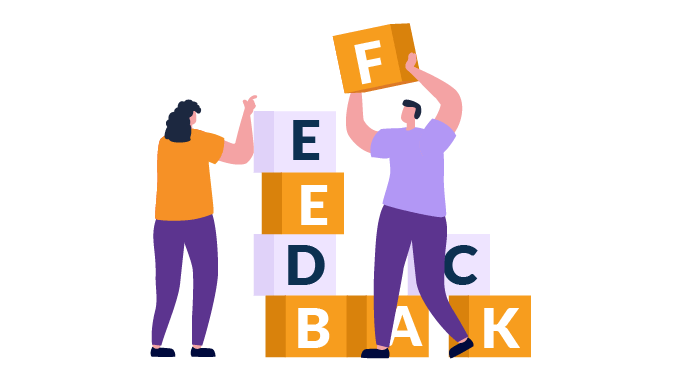
Constructive feedback is an integral part of growth and improvement.
Ongoing feedback conversations beyond annual reviews are linked to higher engagement as people wish to discuss progress and growth regularly.
An effective feedback practice consists of monthly check-ins by managers. Here, managers should take the initiative of providing pragmatic inputs that employees can immediately apply. This method is far superior to providing retrospective scores on past work.
Additionally, managers must establish regular and meaningful feedback mechanisms where praise is given freely, and constructive criticism is provided in a supportive manner. This not only helps employees improve but also shows them that their development is a priority.
Example: Netflix has incorporated a 4A feedback system that allows employees to give and receive feedback on a daily basis. Every day, team members are encouraged to take a few minutes to reflect and jot down one aspect of their work they excelled in and one area they could enhance. Additionally, they should offer feedback to a fellow team member using the 4A framework.
When team members give feedback, they should focus on four key aspects: Attention, Amplification, Alignment, and Accountability.
Attention: The feedback should highlight the most crucial parts of the work, particularly those elements that have the greatest impact and relevance.
Amplification: It should offer constructive suggestions on how to enhance and improve the work.
Alignment: The feedback should include advice on how the work aligns with the company's overall goals and values.
Accountability: It should provide clear recommendations on how to implement the work effectively and identify who will be responsible for its success.
16. Schedule Flexibility

Empowering employees to maintain a flexible schedule boosts work-life balance.
Organizations can easily achieve this by allowing employees to adjust working hours and locations relative to personal needs.
For example, trusting people with autonomy over rhythms, providing they meet outcomes, increases motivation and effort during working time.
This adaptability allows employees to work when they are most effective and balances their personal and professional lives, leading to a more satisfied and productive workforce.
Example: True to its "Just Do It" mantra, Nike empowers employees to achieve greatness at work and in life through competitive benefits spanning health, finances, learning and flexibility.
Seeking to foster work-life harmony, Nike provides access to insurance plans and educational programs helping people develop skills. Promoting holistic wellness, Nike offers fitness perks and restorative recovery days off to recharge fully.
Ultimately, Nike's suite of forward-thinking workplace perks aims to nurture an inclusive, supportive culture grounded in trust. One that offers the flexibility and care people need to bring their best, most creative selves each day.
By continually investing in employee balance across multiple dimensions including physical activity, emotional health, lifelong learning and personal time, Nike sets the bar for employee experience programs that enable people to thrive professionally without compromising their wellbeing.
17. Community Involvement

Uplifting employee communities beyond office walls galvanizes team bonding. Organizations can take initiatives like volunteering events and fundraising events to create shared memories for employees.
Additionally, encourage and facilitate involvement in community service and social responsibility initiatives.
These experiences inspire purpose beyond corporate walls. However, keep in mind that paid time off should be provided to preserve work schedules.
This not only contributes to societal good but also instills a sense of pride and collective purpose among employees.
Example: Banfield Pet Hospital, US's largest general veterinary practice, bear the responsibility of translating their principles into tangible actions that benefit the communities where they operate, live, and engage. Their Corporate Social Responsibility initiatives are structured around three strategic pillars aimed at optimizing their societal contributions: Enhancing the well-being of their staff and the profession,
* Promoting the well-being of pets, and
* Contributing to the well-being of communities
Notably, some of the associates' preferred programs include volunteering during company hours, providing complimentary veterinary care to shelter animals, and imparting knowledge to young individuals about career prospects within the veterinary field.
Strategies to Leverage the Drivers of Employee Engagement

While identifying the key drivers of engagement is an important first step, organizations must take tangible actions to optimize those workplace elements.
To effectively leverage the drivers of employee engagement, especially in a remote or hybrid workforce, organizations can adopt several strategic approaches. These strategies are crucial in ensuring the drivers are not just identified but also actively used to enhance employee engagement:
Conduct Employee Surveys
Utilize employee engagement surveys to gain a deeper understanding of each employee. Regular pulse surveys can help develop a heatmap to display scores based on various engagement drivers, offering insights into areas of strength and those needing improvement.
These surveys provide critical employee feedback on which drivers need improvement. You can take advantage of employee pulse survey platforms to accomplish the above-mentioned objectives.
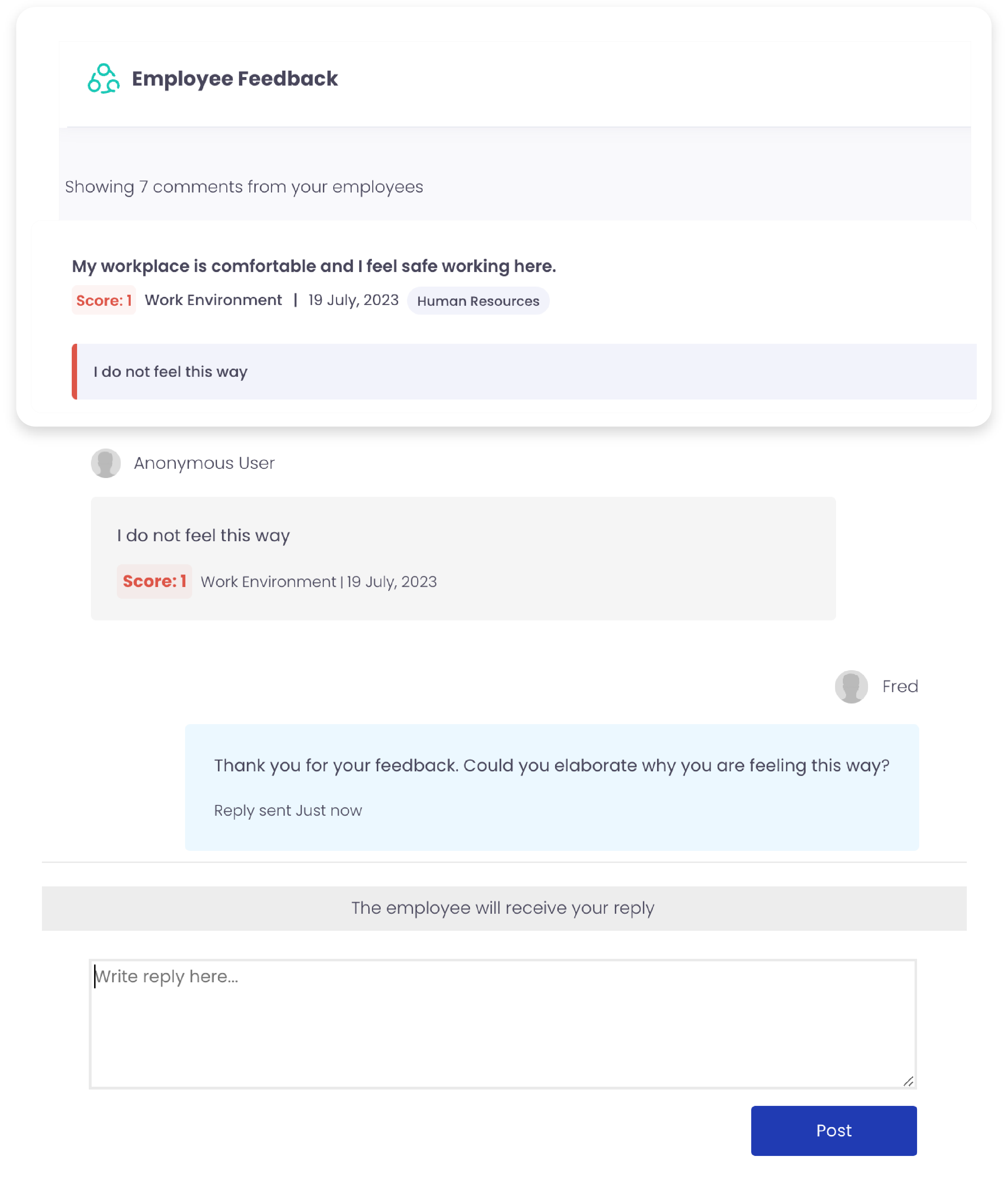
Source: Vantage Pulse
One such leading platform in the industry is Vantage Pulse. This platform allows you to measure employee engagement and gather feedback anonymously.
Analyze Data for Trends and Priority Areas
Data is only as good as its interpretation. In the world of employee engagement, this means turning numbers into narratives.
With the right analytics tools, survey results transform into visual stories that leaders can quickly understand and act upon. The focus here is on identifying trends - which areas are scoring high and which need urgent attention.
Here, each data point acts like a clue, leading to the heart of what makes or breaks employee engagement.
Host Interactive Employee Listening Sessions
While surveys tell you the 'what,' interactive sessions tell you the 'why.'
These are the forums where employees get a stage to voice their thoughts beyond the confines of pre-set survey questions. It's about creating a space for open dialogue, where employees can elaborate on their survey responses, offer fresh ideas, or raise concerns.
This qualitative dimension adds depth to the quantitative survey data, giving a fuller picture of the engagement landscape.
Recognize Talent and Performance
In the quest to maintain a vibrant and productive workplace, acknowledging and rewarding high performance stands as a pivotal employee engagement strategy. It's about creating an ecosystem where excellence is not just noticed but celebrated.
This begins with establishing a regular system of recognition, one that seamlessly integrates into the daily workflow. Whether it's through structured award programs or spontaneous commendations, the goal is to make recognition a consistent and expected part of the organizational culture.
Many organizations have utilized employee rewards and recognition platforms to their full potential to address the abovementioned issues. These platforms allow you to recognize employees for their contributions regularly. This leads to higher engagement and performance over time.
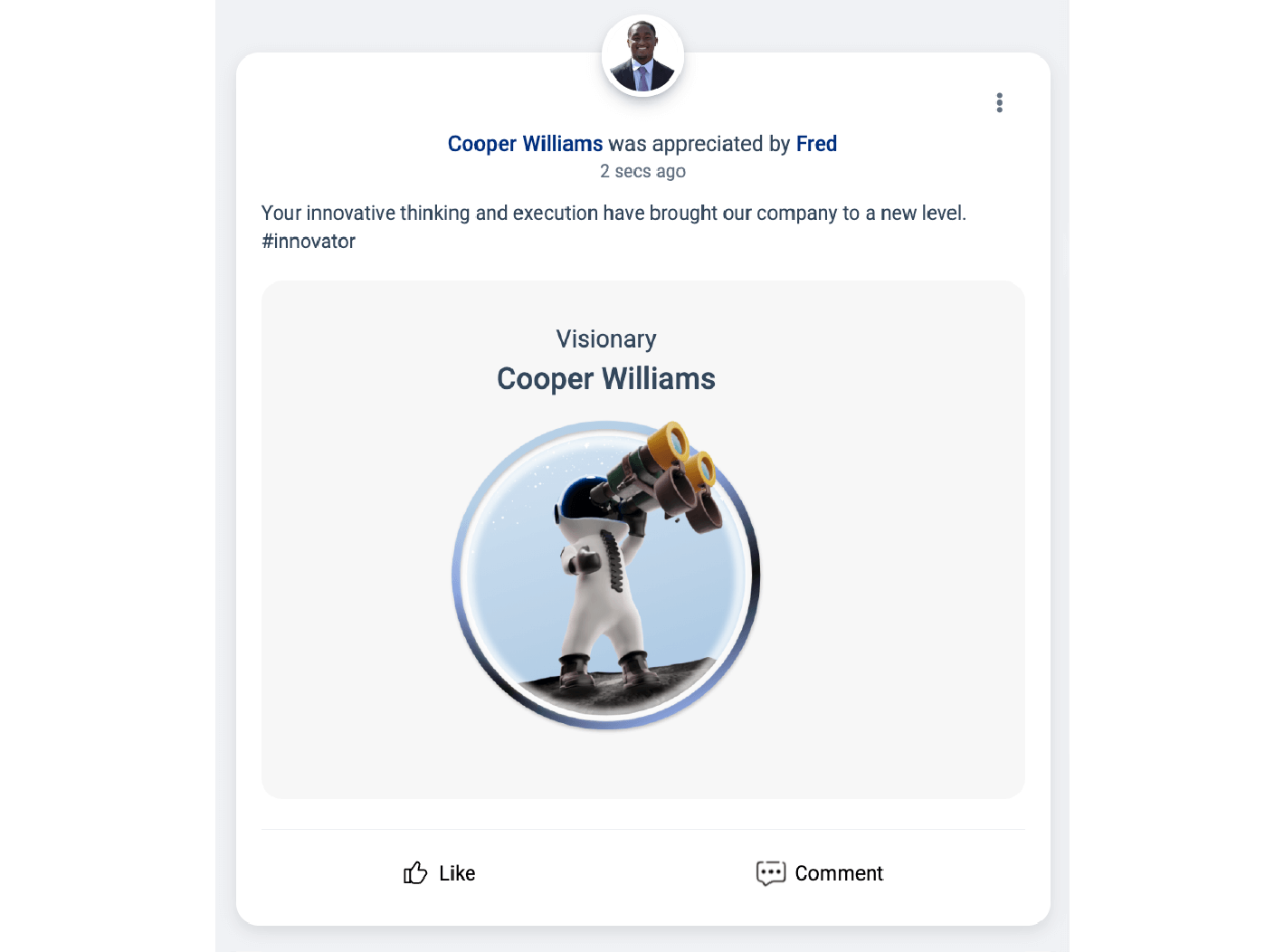
Source: Vantage Rewards
Final Words
Driving employee engagement is not a static process but a dynamic one, requiring continuous effort and adaptability. The strategies laid out in this article, from conducting in-depth employee surveys to recognizing talent and performance, are designed to foster a culture where every employee feels valued and integral to the organization's mission.
These drivers of engagement, when effectively leveraged, transform ordinary workplaces into thriving ecosystems where employees are not just workers but passionate ambassadors of their brand.

















